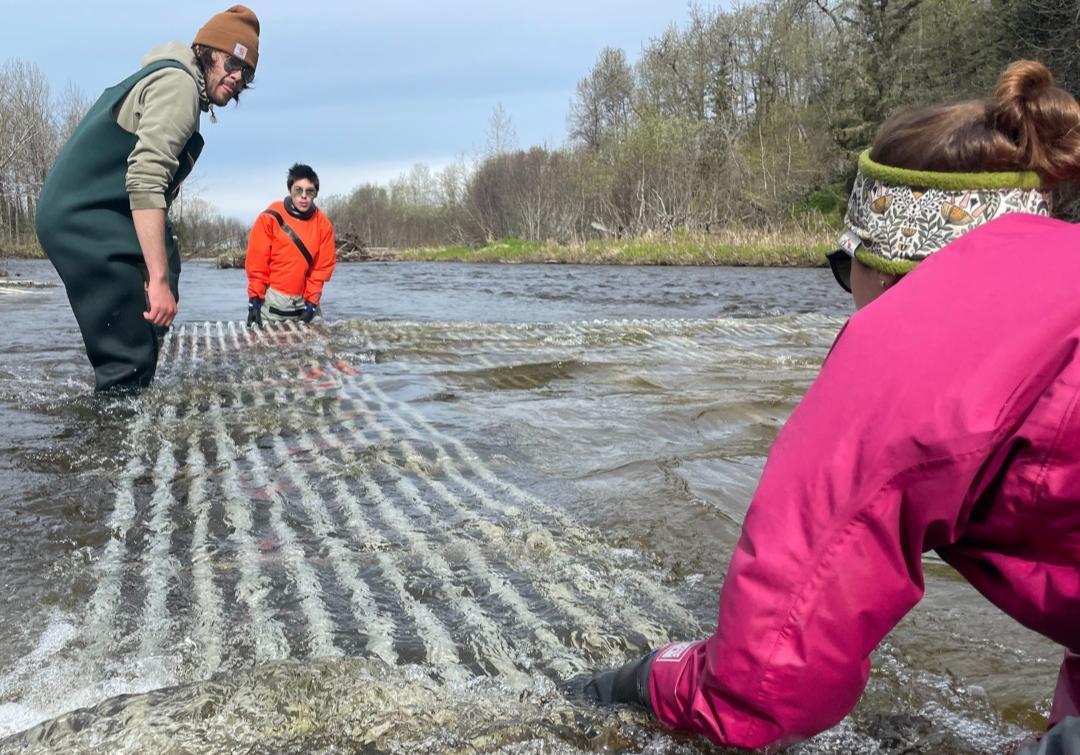
- Details
- By Chez Oxendine
- Food | Agriculture
Alaska’s next wave of sustainable Indigenous businesses is underwater.
A $49 million federal initiative is expanding Alaska’s mariculture industry, with Native entrepreneurs and tribal organizations playing a key role in developing coastal water farms for kelp and shellfish. For Alaska Natives, this could create new business and economic development opportunities that build on generations of traditional harvesting knowledge.
The Alaska Mariculture Cluster, led by the Southeast Conference regional economic development organization, is using the federal funds from the Economic Development Administration (EDA) to unites tribal organizations, regulatory agencies, universities, and trade organizations.
While Alaska’s mariculture industry remains small globally, it aims to become a $325 million sector by 2040. Early signs of growth are promising: seaweed production rose from nearly zero in 2018 to nearly 900,000 pounds in 2022, while the number of oysters sold reached nearly million oysters that same year, according to a February 2024 report from the National Oceanic and Atmospheric Administration (NOAA).
Current projects range from environmental studies and risk evaluations to business financing and renewable energy initiatives. Roughly a quarter of the program’s services have been set aside for tribal communities, where Alaska Native mariculture workers represent around 20% of the workforce, per an insights report by the Cluster.
Jeff Hetrick, director of the Seward, Alaska-based Alutiiq Pride Marine Institute, said the funding has accelerated programs at his organization forward by “two or three years,” expanding jobs and opportunities.
“This money pushes us forward and gets more eyes on us, and that lets us provide jobs and support careers,” Hetrick said. “This is helping us to build stronger programs and modernize our equipment. It’s having a really positive impact on us.”
Support from the Cluster has helped the Institute launch research initiatives into kelp, shellfish, and environmental surveys. The Institution has also upgraded their hatchery equipment and made new hires using the funding, Hetrick said.
For example, some new staff are leading a project to track, protect and grow razor clam populations across the region. Razor clams provide both subsistence farming and economic development opportunities statewide. Restoring their populations could benefit “all of Alaska,” not just the region, Hetrick said.
Growing demand for seaweed products in food, cosmetics, and pharmaceuticals markets has sparked new research on kelp at the Institute. Cluster funding is supporting the development of more efficient growing and processing methods, Hetrick said.
“As a natural resource organization, part of our charter is economic development, which is challenging in remote communities,” Hetrick said. “Mariculture, particularly kelp aquaculture, offers significant opportunities for a lot of people.”
The Cluster’s support extends beyond research. It’s helped lower barriers to starting businesses or expanding existing operations through equipment loans, workforce training, and technical assistance. That’s helped buoy the number of active farming permits across the region.
Permit numbers have climbed steadily from a low of 23 in 2015, according to AMC data. The region now counts four hatchery/nursery permits and 37 aquatic farm permits as of 2023, according to the Cluster’s insights report.
The surge in permits reflects growing interest in the sector. Applications averaged about six annually from 2014 to 2018, but increased to about 14 per year from 201 to 2023, according to the NOAA report. Alaska permits farming of 42 seaweed and invertebrate species, though finfish farming remains prohibited in state waters.
Native entrepreneurs hold many of those permits, said Alana Peterson, executive director for Juneau-based Native Community Development Financial Institution (CDFI) Spruce Root. (Hetrick estimated “around 20” Native-owned permits in an interview with The Fish Site.)
It makes sense: farmers are turning to their subsistence practices and traditions as a way of economic development, Peterson said.
“For example, if I enjoy harvesting seaweed with my family, starting a farm to cultivate seaweed isn't far off from what I already do,” Peterson said. “There's a lot of excitement in the places we've been working with, seeing this as a new revenue stream for families and communities.”
 (From left); Jeff Hetrick of Alutiiq Pride Marine Institute and Alana Peterson of Spruce Root. The economic impact of Native-owned mariculture operations extends beyond the individual businesses. These enterprises create local jobs in remote areas, support food security initiatives, and generate revenue that circulates within Native communities. They also serve as bridges between traditional harvesting practices and emerging markets, particularly as climate change affects traditional fishing patterns.
(From left); Jeff Hetrick of Alutiiq Pride Marine Institute and Alana Peterson of Spruce Root. The economic impact of Native-owned mariculture operations extends beyond the individual businesses. These enterprises create local jobs in remote areas, support food security initiatives, and generate revenue that circulates within Native communities. They also serve as bridges between traditional harvesting practices and emerging markets, particularly as climate change affects traditional fishing patterns.
Spruce Root finances equipment and boats, offers business training, and helps operators obtain diving permits and other certifications. The Native CDFI also manages matching funds for the Cluster’s $9.3 million revolving loan fund, launched in the fall of 2024. The loan fund aims to break down traditional lending barriers for mariculture businesses, with half of its resources targeted to Indigenous and underserved communities, including 25% earmarked specifically for Alaska Native entities.
The resources have helped Native producers launch new kelp and oyster farms, as well as processors and seed nurseries, but Peterson is quick to point out another key impact: more Native representation in industry decisions. Native participants have brought traditional knowledge — and heightened attention to sustainable business practices, Peterson said.
“Our Native voice has been elevated and has a presence, with a collaborative approach for organizations like ours supporting indigenous-led efforts across the state,” Peterson said. “To be able to work together to ensure that this industry includes Native perspectives and voices, rather than leaving them aside as many industries have in the past, has been really successful so far.”
Mariculture is central to subsistence and cultural practices for Alaska Native villages. That means getting more Native-owned businesses on their feet is a boon for both the business owners and the communities where they live and work, Peterson said.
“As Indigenous people, we are closely tied to the land, and in our rural communities, especially, we see people whose culture and access to traditional activities are essential,” Peterson said. “It must be environmentally sustainable as well as economically. It should not decrease or limit access to these resources for people who rely on them daily. This is one of the key aspects that Indigenous voices bring to this industry, ensuring it is considered in decision-making.”
Southeast Conference Executive Director Robert Venables called Alaska Native communities the “original stewards of the region” and crucial partners in the Cluster’s work.
“We’re working with various Alaskan Native community partners to help them create and develop new mariculture jobs,” Venables said. “We want to create an economy that’s good for people, the environment, the planet, and is great for Alaska.”
Brian Edwards contributed additional reporting.
